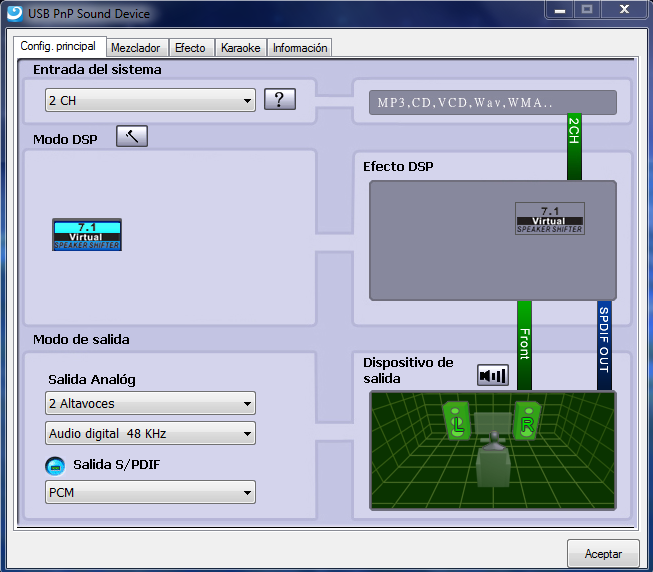USB port types and names
- Undetected/Missing Drivers For USB PnP Audio Device ...
- Adding A PnP Device To A Running System - Windows Drivers ...
- Windows 10 Doesn't Install Specific Drivers For USB Audio ...
- Adding A PnP Device To A Running System - Windows Drivers | Microsof…

USB (Universal Serial Bus) is an industry standard for connecting computers and other devices. It's available with many types of ports, and each type has a unique shape. On Mac, USB is available with these ports, depending on your Mac model:
LG Monitor Drivers for Windows. These drivers are designed to work with all LG Monitors by type.If your Monitor Type is not listed, the Generic PnP Drivers supplied by your Operating System provide full functionality (no added advantage to product specific drivers).
USB-A
- The D2XX driver allows direct access to a USB device via a DLL interface. To locate the drivers you want to install for a device, select which of the driver types you wish to use (VCP or D2XX) and then locate the appropriate operating systems. With the exception of Windows 98 and Windows ME, all devices are supported in each driver package.
- Aug 28, 2015 - Settings shows Connected devices as 'USB PnP Sound Device' - Device Manager shows them under Sound, Video and games controllers, USB PnP Sound Device - Loaded driver is Microsoft USB PnP Sound Device dated Driver Version 10.0.4 - Hardware ID's are VIDE4B7&PID0812 - Everything is good.
- Complete the instructions to install the device drivers, and restart your computer when prompted to. After your computer restarts, connect the USB sound card to your computer. Your computer automatically finishes installing the driver and your device should be ready to use. Opens in new window.
Type USB-A ports are commonly called USB, USB 2, or USB 3 ports, depending on the USB specification they support. They aren't reversible, so a USB-A connector plugs into the port only when oriented correctly.
USB-C
Type USB-C ports are available on Mac as standard USB-C ports, Thunderbolt 3 ports, and Thunderbolt / USB 4 ports. They all look the same, and the connector plugs into the port in either orientation.
Learn more about identifying the ports on your Mac, as well as the adapters and cables you can use to connect older devices to type USB-C ports.
USB specifications
USB specifications are important primarily when you want the most speed and power for your USB device, or your device needs more power or is using too much power. Every USB port supports a particular USB specification, which determines the port's maximum>USB specifications on MacData transferPower deliveryUSB 4Up to 10 GbpsUp to 15W at 5VUSB 3.1 Gen 2
Also known as USB 3.2 Gen 2
Up to 10 GbpsUp to 15W at 5VUSB 3.1 Gen 1
Also known as USB 3.2 Gen 1 or USB 3
Up to 5 GbpsUp to 900 mA at 5VUSB 2.0
Up to 480 MbpsUp to 500 mA at 5VUSB 1.1
Up to 12 MbpsUp to 500 mA at 5V
To learn which specification is supported by a type USB-A or type USB-C port on your Mac model:
Undetected/Missing Drivers For USB PnP Audio Device ...
- Choose Apple menu > About This Mac, click Support, then click Specifications.
- Check the System Information app for more details, including about USB devices connected to USB ports on your Mac. Select USB in the sidebar, then select a USB bus on the right.
Get the best performance from your USB devices
Adding A PnP Device To A Running System - Windows Drivers ...
USB specifications all work with each other, but speed and power are limited by the cable or device that uses the earliest specification. For example, if you connect a USB 3 device to USB 2 port, your device is limited to USB 2 speeds, and it can't draw more power from the port than can be delivered over USB 2. In other words, to get the best performance, make sure that the USB port on your Mac and the USB cable to your device meet or exceed the USB specification of the device itself.
If your Mac doesn't recognize a USB device after you plug it into your Mac:
- Check all connections: Unplug the device from your Mac, then plug it back in, and make sure that all cables and adapters are securely connected at both ends. Test with another cable or adapter, if available.
- Plug the device directly into your Mac instead of a USB hub or other device, and if necessary test with a different USB port on your Mac or device.
- Some devices need their own software, such as drivers or firmware. Others work without additional software. Check with the maker of your device, and install all available Apple software updates as well.
- If your device came with an AC power adapter, use it. Some devices can be powered by the USB port on your Mac. Others need more power than your Mac can provide.
- Restart your Mac.
Windows 10 Doesn't Install Specific Drivers For USB Audio ...
Learn more
Adding A PnP Device To A Running System - Windows Drivers | Microsof…
- USB 3 devices can create wireless interference that affects Wi-Fi and Bluetooth devices. Learn how to resolve Wi-Fi and Bluetooth issues caused by wireless interference.
- Mac notebook computers with USB-C, Thunderbolt 3, or Thunderbolt / USB 4 can charge over that port using a compatible USB-C power adapter and cable.